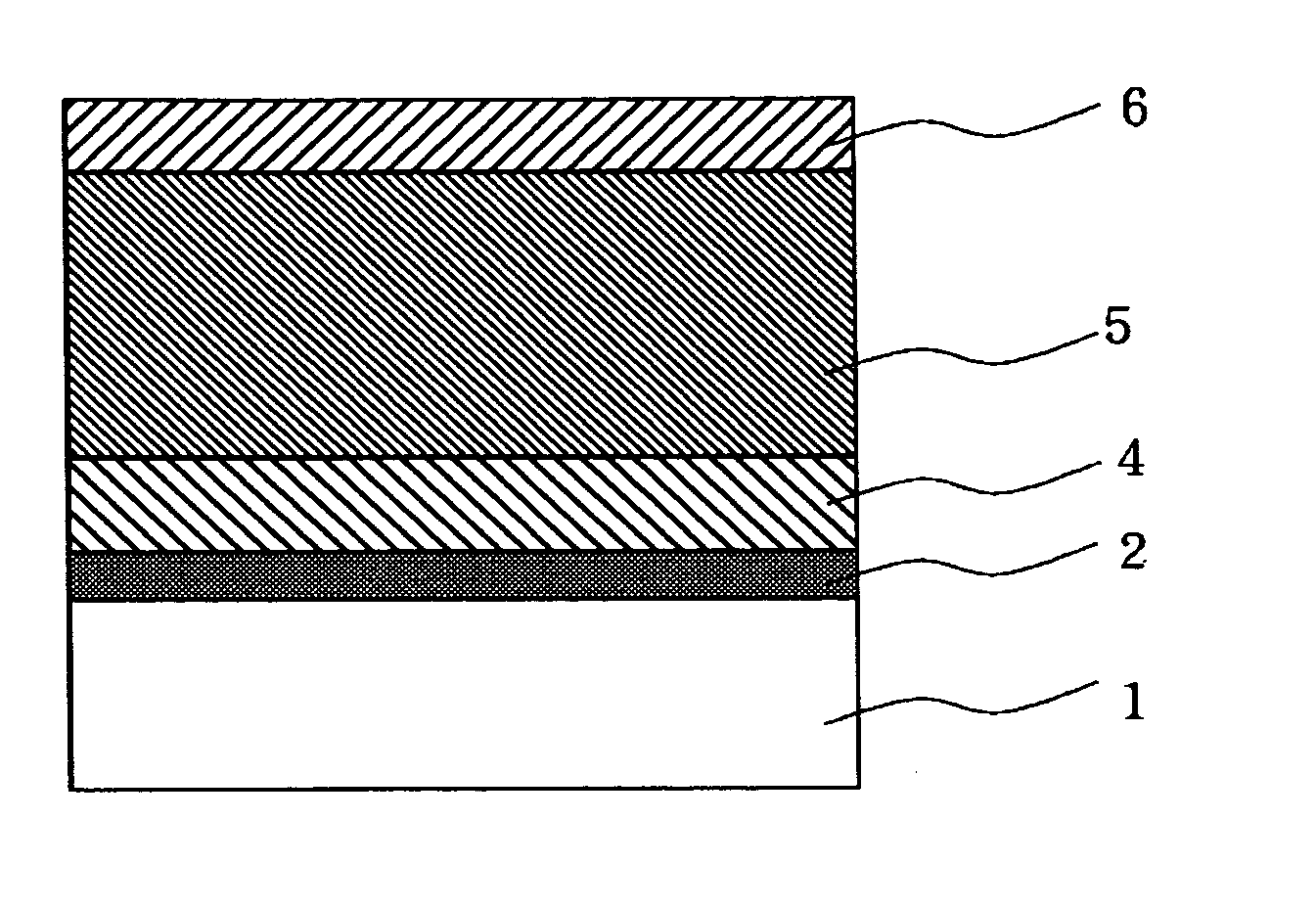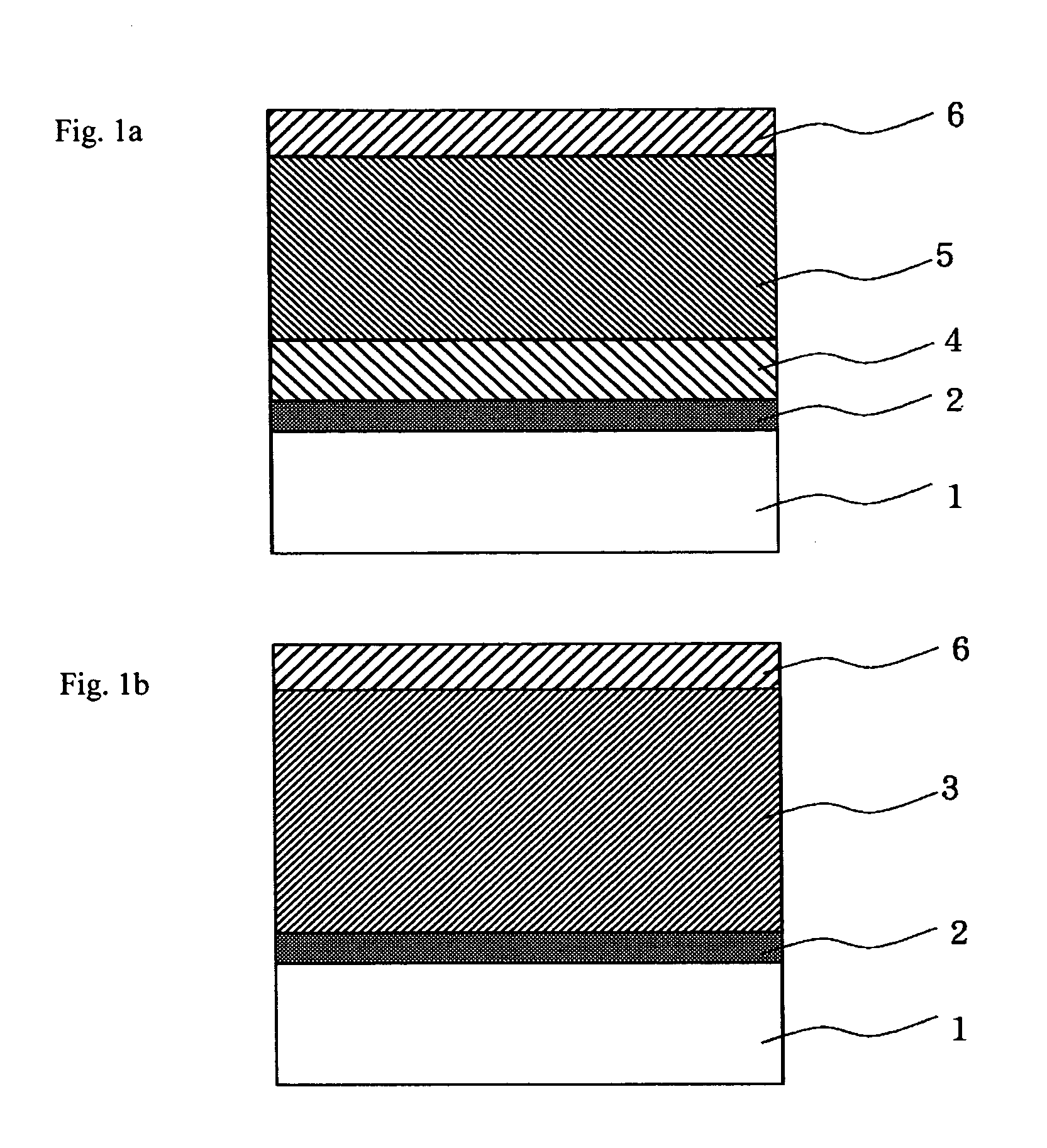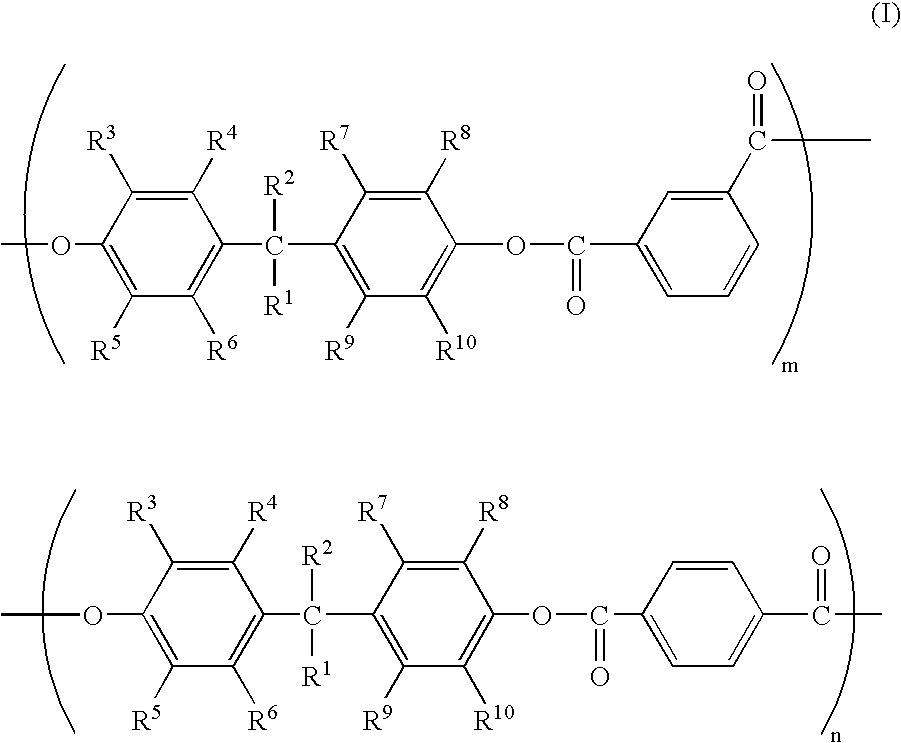Electrophotographic photoconductor and methods therefor
a photoconductor and electrophotography technology, applied in the direction of electrographic process, instruments, corona discharge, etc., can solve the problems of prone to solvent cracks or cracks, prone to solvent cracks, drawbacks, etc., to maintain the electrophotographic performance of the photoconductor, improve the resistance to solvent crack formation, and improve the effect of image quality
- Summary
- Abstract
- Description
- Claims
- Application Information
AI Technical Summary
Benefits of technology
Problems solved by technology
Method used
Image
Examples
examples of embodiments
Specific and non-limiting examples of several embodiments of the invention are described in more in detail as follows. However, it is understood that the invention is not limited to these specific examples.
Manufacture of Polyarylate Resin
manufacturing example 1
A Manufacturing Method for Polyarylate Resin A
Ion-exchanged water 720 mL, NaOH 17.2 g, p-tert-butylphenol 0.12 g, bisphenol A 45.6 g, and tetrabutylammonium bromide 0.06 g were put into a four-port 2 liter flask. Terephthalic acid chloride 18.27 g and isophthalic acid chloride 22.33 g were dissolved in 720 mL of methylene chloride. This solution was put into the four-port flask in about 2 minutes, and then stirred for one and a half hours to promote chemical reaction. After completion of the reaction, the solution was diluted with 480 mL of methylene chloride. The aqueous phase was separated and reprecipitated with a four-fold volume of acetone. After air-drying overnight, the obtained raw material was dissolved in methylene chloride to make a 5% solution, which was then rinsed with ion-exchanged water. The reacted liquid was dropped into a four-fold volume of acetone that was vigorously agitated to cause reprecipitation. The precipitated substance was gathered by filtration and d...
manufacturing example 2
Manufacturing Method for Polyarylate Resin B
Polyarylate resin B was manufactured in the same manner as described for Manufacturing Example 1 except that the quantity of the terephthalic acid chloride was 16.24 g and the quantity of the isophthalic acid chloride was 24.36 g. The polystyrene-converted weight average molecular weight of the obtained polyarylate resin B was 103,200. The structural formula of the polyarylate resin B so obtained is shown below:
PUM
| Property | Measurement | Unit |
|---|---|---|
| photosensitive | aaaaa | aaaaa |
| charge transport | aaaaa | aaaaa |
| conductive | aaaaa | aaaaa |
Abstract
Description
Claims
Application Information
 Login to View More
Login to View More - R&D
- Intellectual Property
- Life Sciences
- Materials
- Tech Scout
- Unparalleled Data Quality
- Higher Quality Content
- 60% Fewer Hallucinations
Browse by: Latest US Patents, China's latest patents, Technical Efficacy Thesaurus, Application Domain, Technology Topic, Popular Technical Reports.
© 2025 PatSnap. All rights reserved.Legal|Privacy policy|Modern Slavery Act Transparency Statement|Sitemap|About US| Contact US: help@patsnap.com



